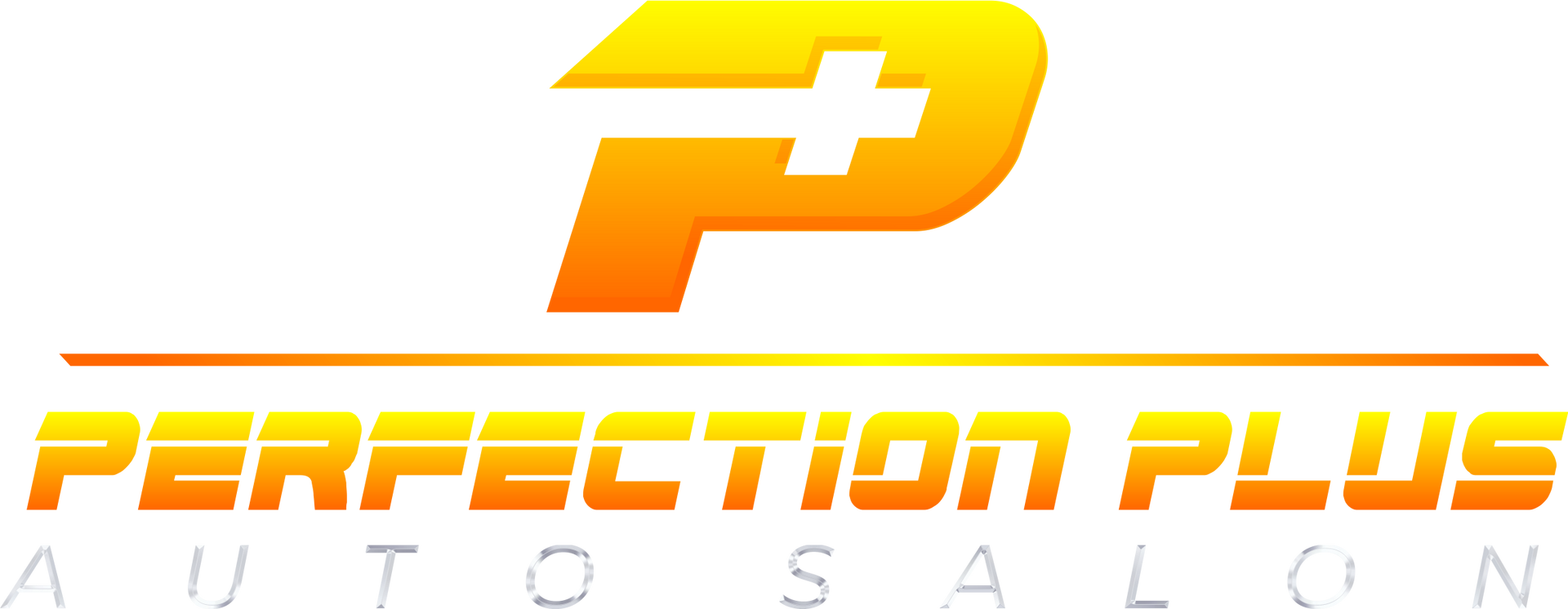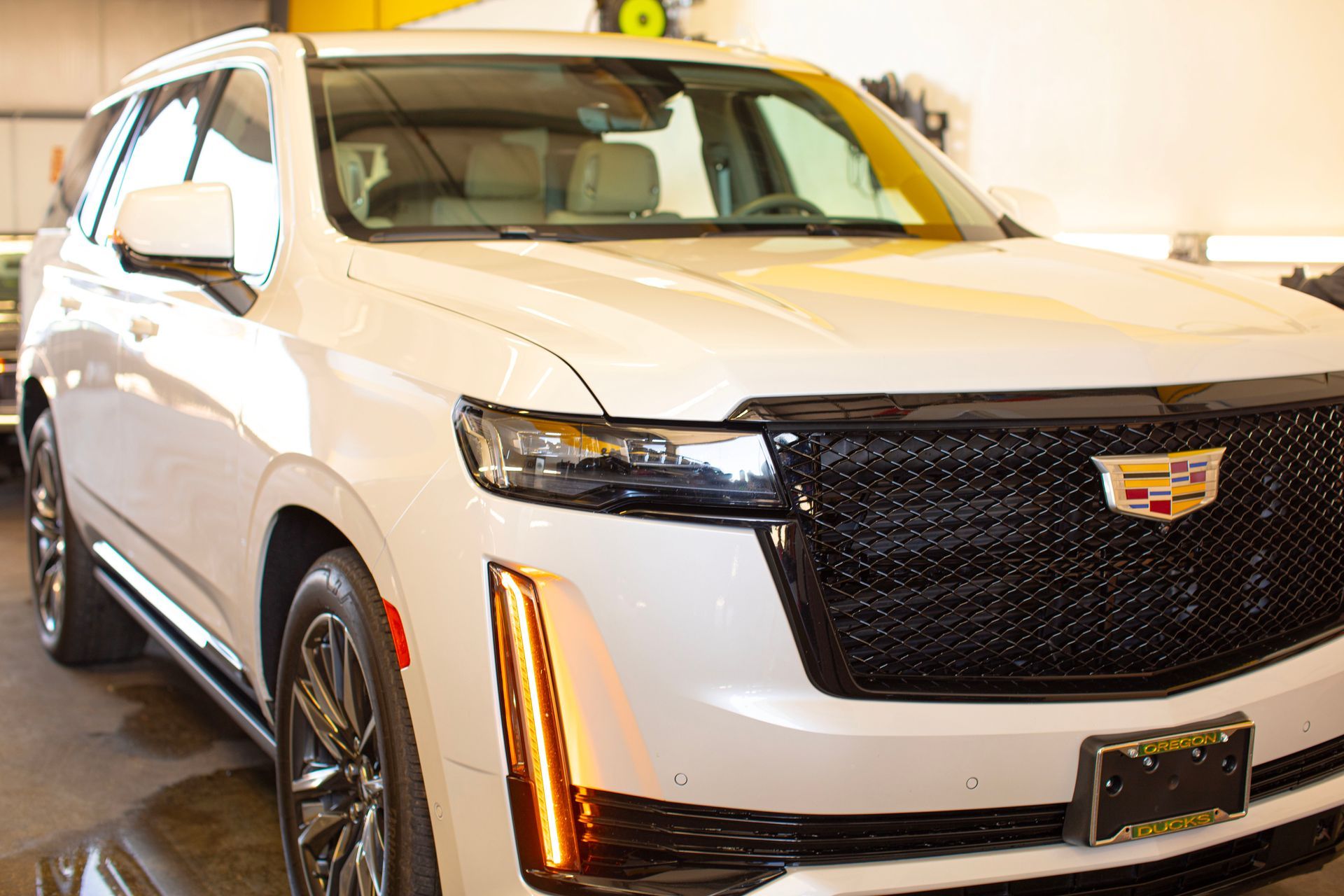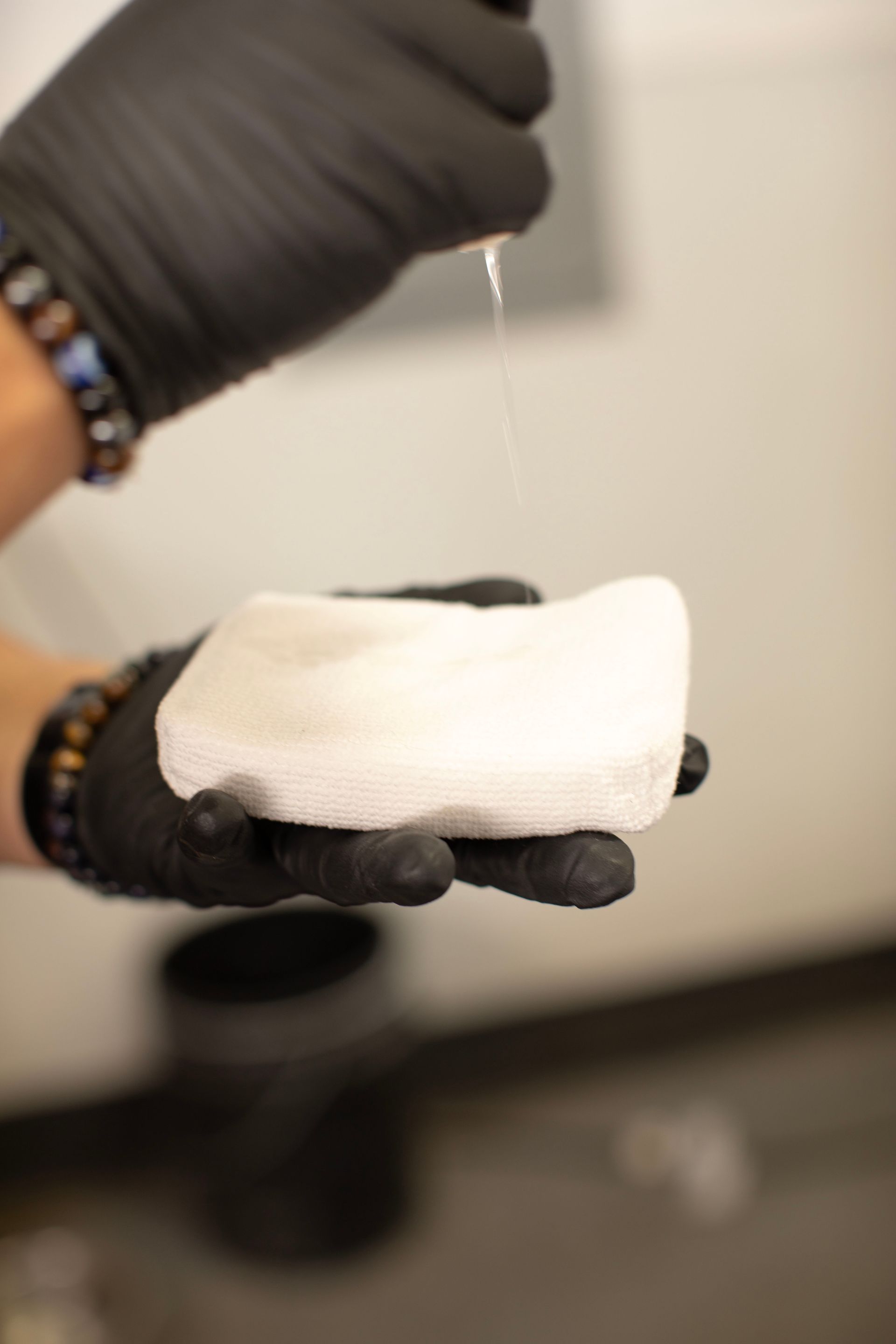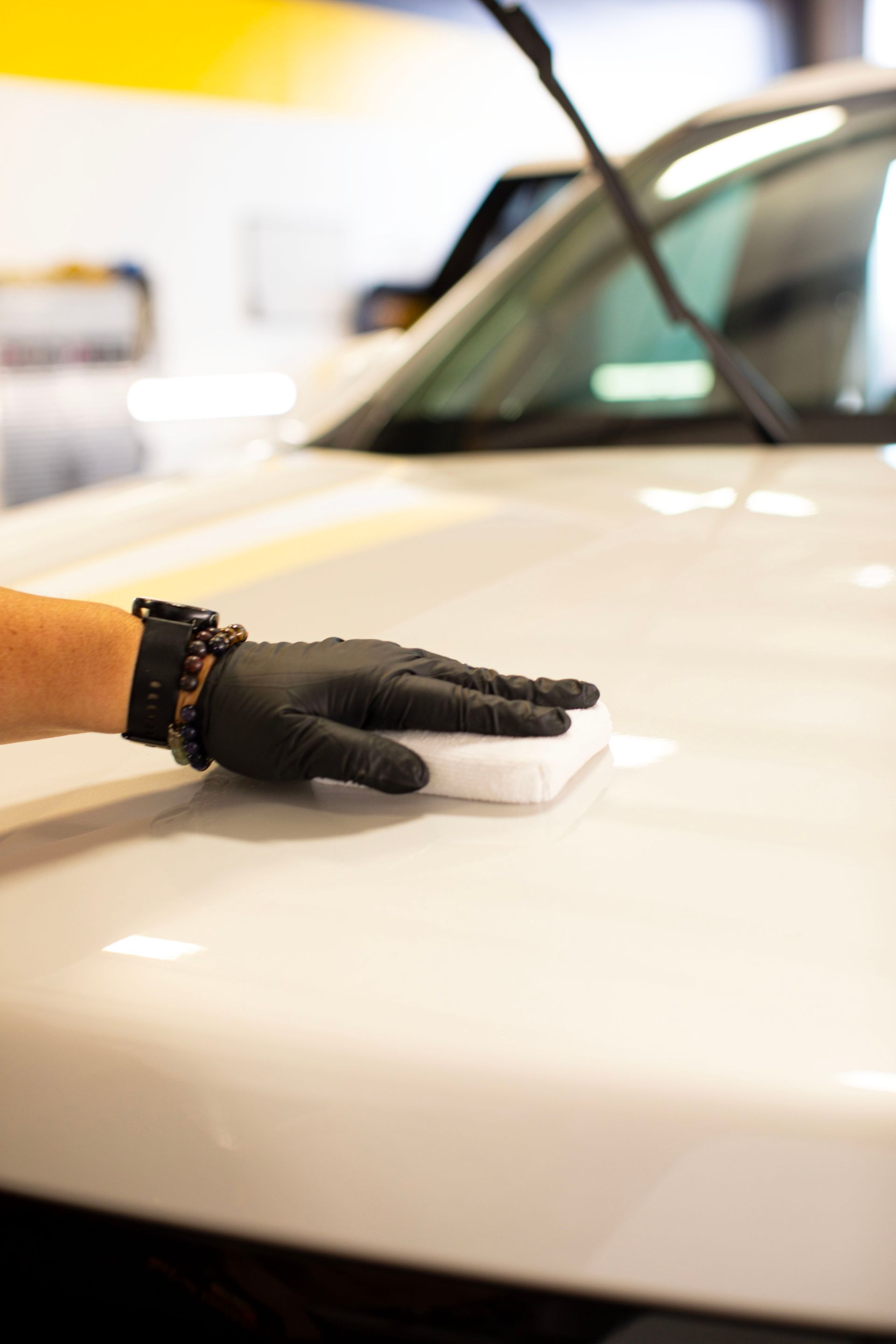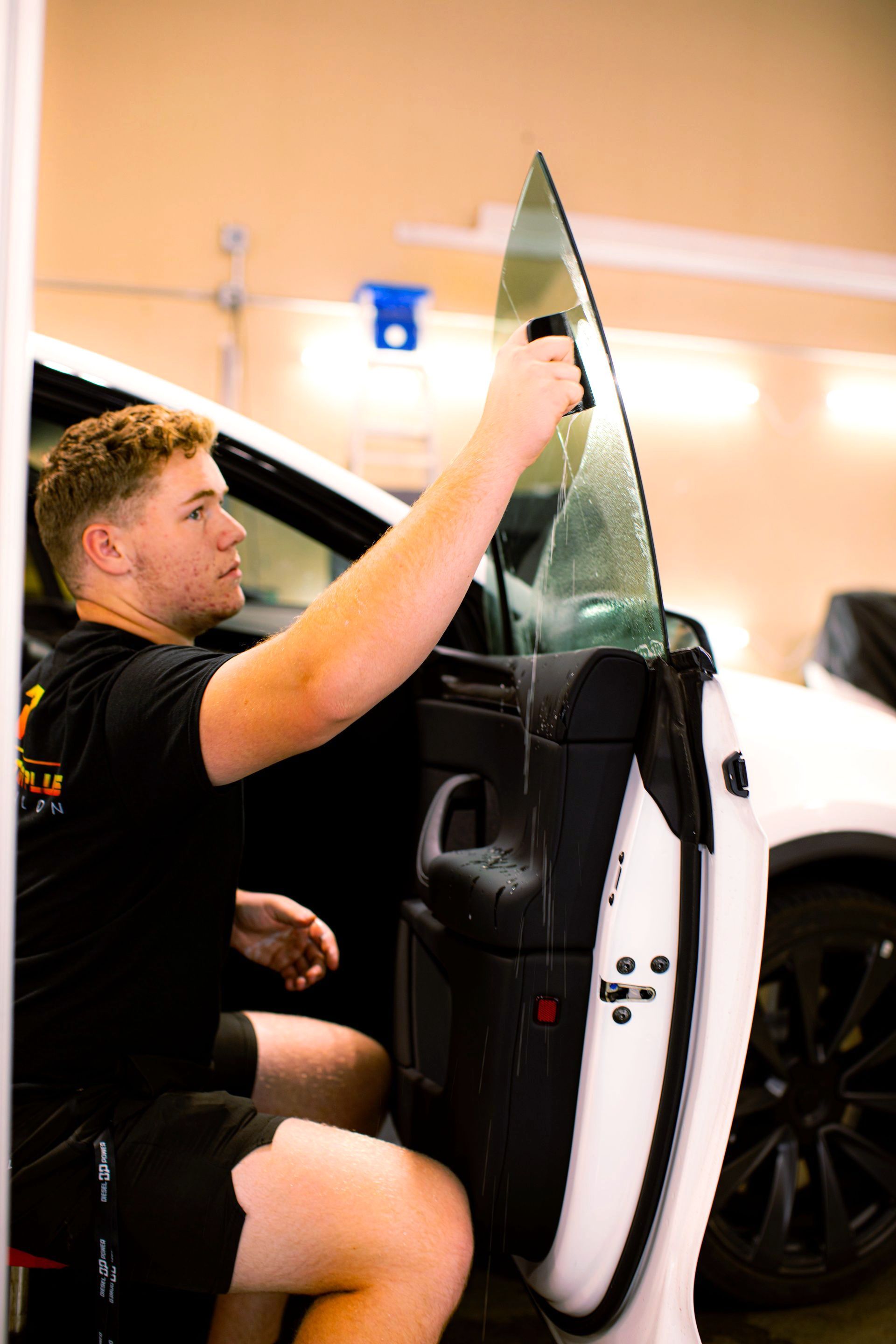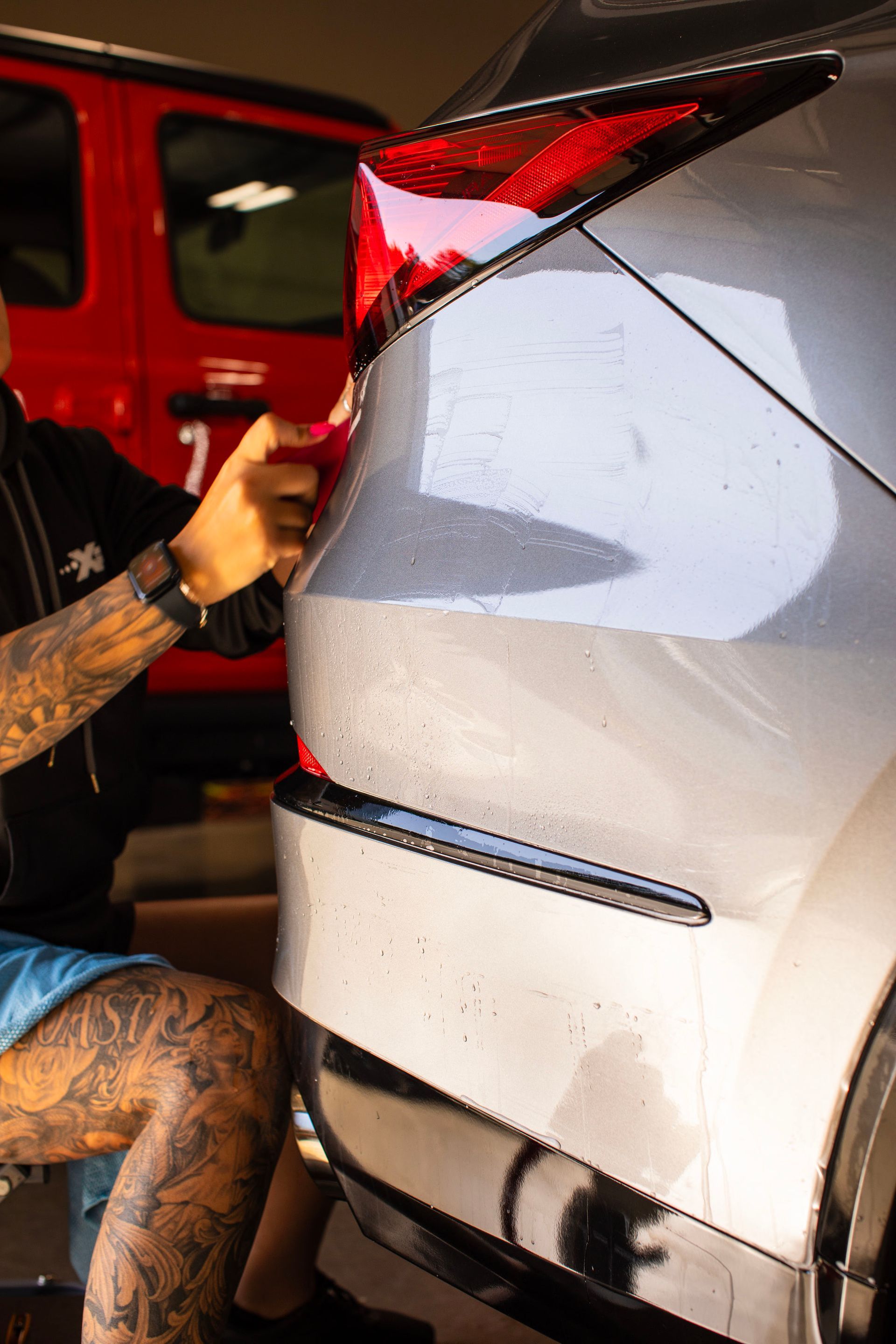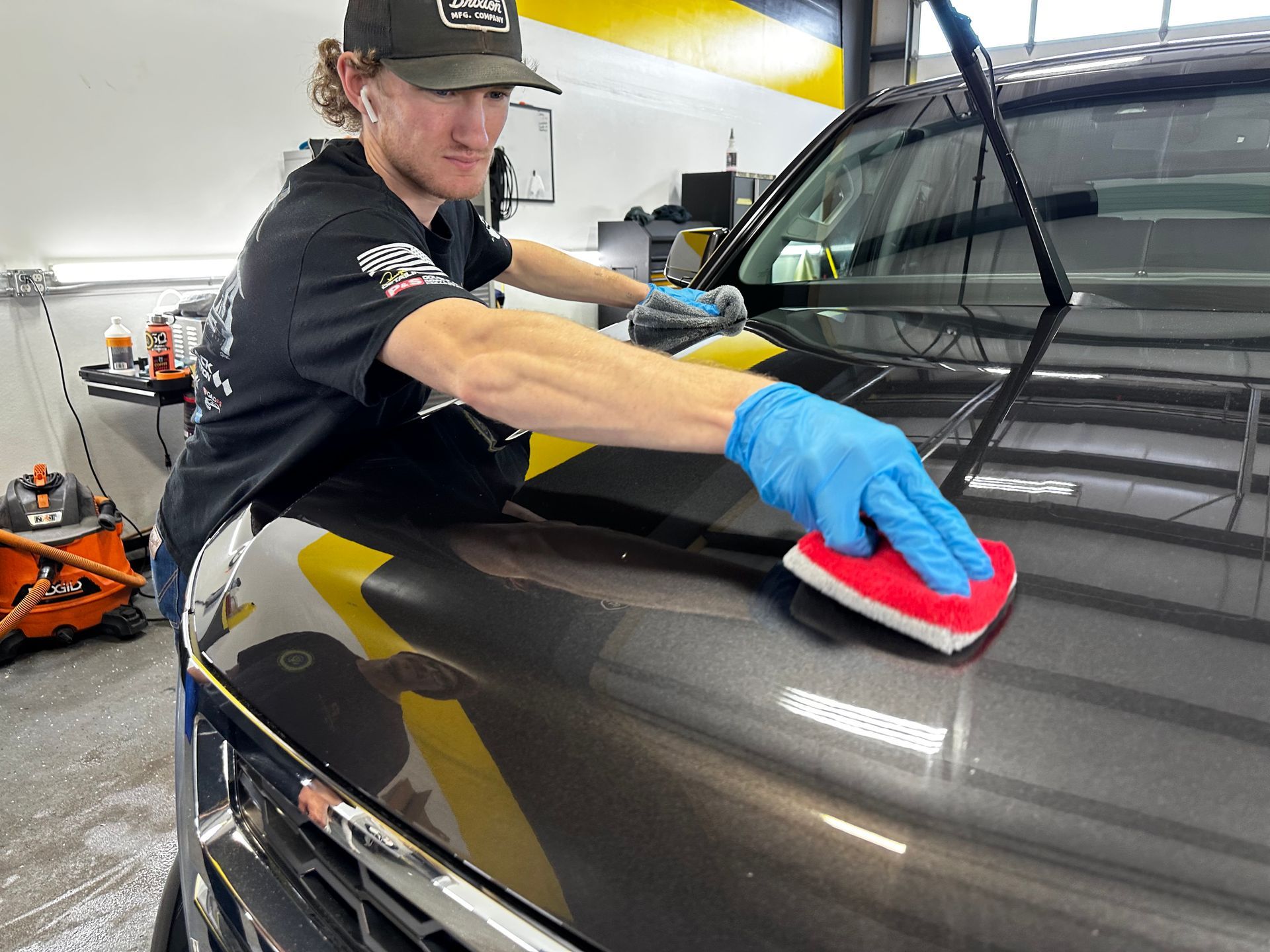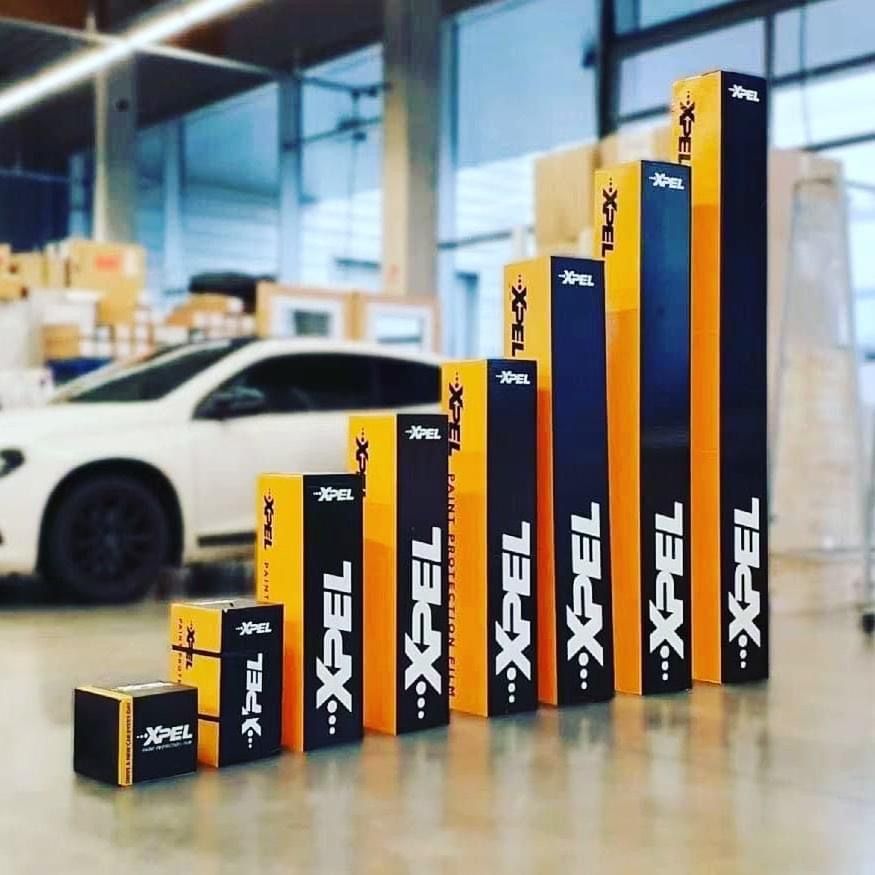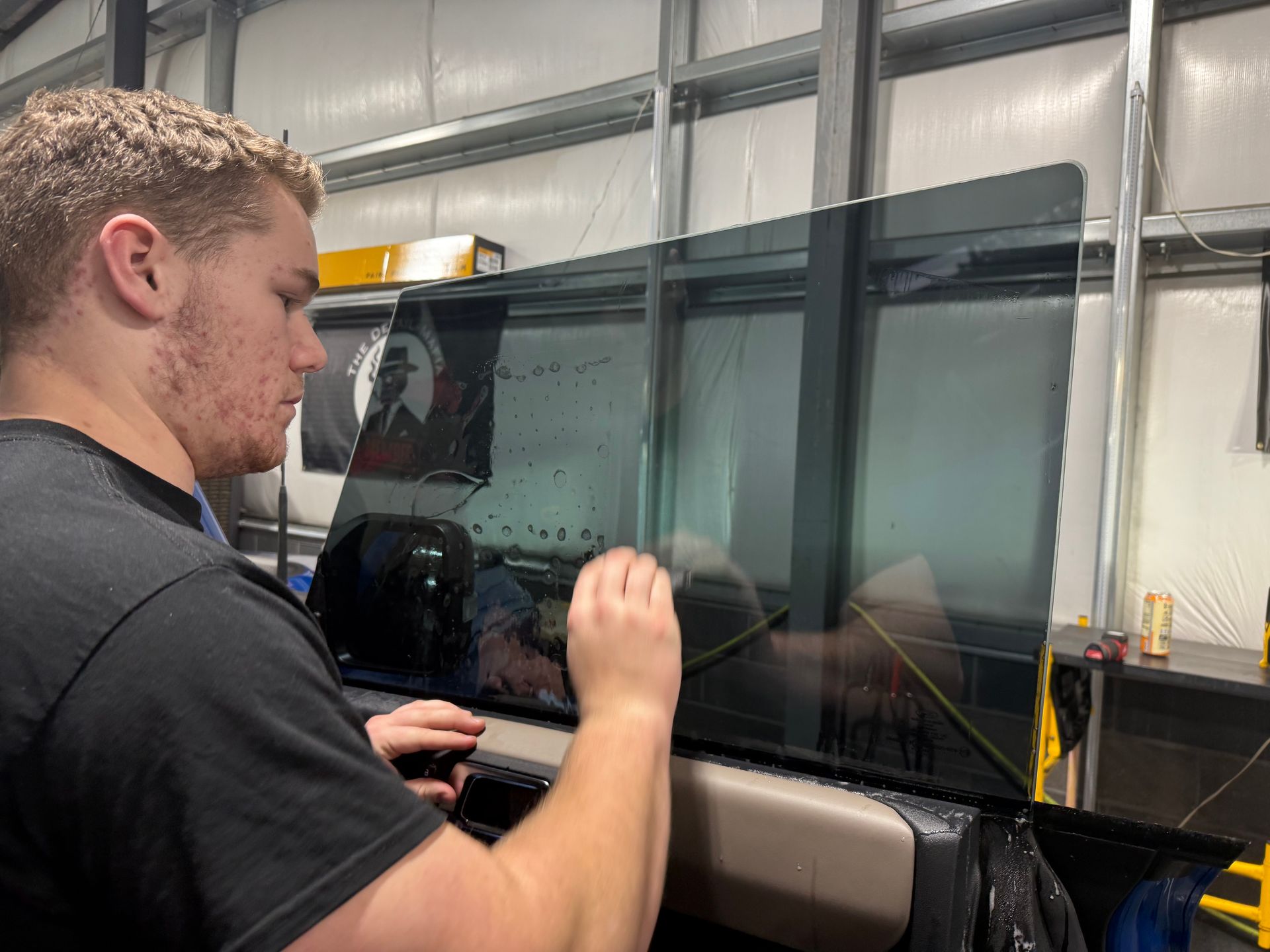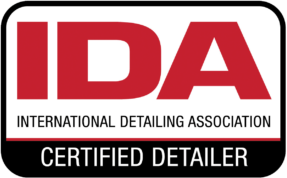Why Ceramic Coating is Essential for New Cars: Benefits and Tips
GET A FREE ESTIMATEEvery car enthusiast knows that protecting a new car's paint can feel like an endless battle against dirt, environmental contaminants, and harsh weather. The constant worry about maintaining that sleek showroom shine is all too familiar. But there's an effective solution that's been turning heads in the automotive world: ceramic coating. Ceramic coating offers more than just a temporary fix; it creates a durable shield against environmental and chemical damage. This cutting-edge technology not only keeps your car looking pristine but also reduces maintenance time and costs.
Ceramic coating for new cars offers long-term protection, preserving the vehicle's value and providing resistance to environmental contaminants, UV rays, and chemical stains. Its hydrophobic properties also make cleaning easier and enhance the car's appearance, making it a worthwhile investment for maintaining your car's pristine condition over time.
Features and Benefits of Ceramic Coating
When considering ceramic coating, it's crucial to understand its robust advantages and how it can impact your car's aesthetic appeal and longevity. This protective layer provides a durable shield that chemically bonds with your car’s original paint. Let’s take a closer look at these benefits, starting with superior protection.
- Superior Protection: This coating isn't just for looks; it serves as a robust shield against various elements that can harm your vehicle. It resists water, dirt, UV rays, bird droppings, and chemical stains. Think of it like a suit of armor designed to safeguard your car's paint, keeping it safe from environmental contaminants while maintaining its pristine appearance. Just like sunscreen protects your skin from harmful UV rays, ceramic coating acts as a barrier between your car's paint and the damaging effects of the sun. This means less fading and oxidation over time, preserving the vibrant look of your car.
- Hydrophobic Properties: The term "hydrophobic" might sound complex, but it essentially means "water-fearing." In practical terms, this means that the ceramic coating repels water, causing it to bead up and roll off the surface easily, taking dirt and grime along with it. There is nothing more satisfying than watching rainwater glide off your car without leaving streaks or stains. Imagine it as an invisible forcefield, effortlessly keeping your car clean by minimizing the buildup of water spots and other impurities.
- Enhanced Gloss and Shine: Have you ever seen a car with an incredibly deep shine that just seems to pop? Well, that's what ceramic coatings do. It significantly enhances the gloss of your car's paintwork, accentuating its colors and visual effects to create a truly eye-catching appearance. This deep reflective gloss is like adding a luxurious finish to your vehicle—elevating its overall appeal and making it stand out on the road or in any setting. After all, who doesn’t want their car to look stunning? These features showcase how ceramic coating offers lasting protection and value to your prized possession.
- Longevity: Unlike traditional waxing methods that are only effective for a few months, high-quality ceramic coatings are designed for the long haul. With consistent maintenance, they can last for years. This extended lifespan ensures cost savings in the long run, as well as maintaining the value of your vehicle over time.
The Ceramic Coating Application Process
Applying a ceramic coating to a car is a precise task that demands careful attention to detail. Here's a step-by-step breakdown of the ceramic coating application process.
Thorough Cleaning
Before the application of ceramic coating, the car must undergo a thorough cleaning to ensure all dirt, grime, and contaminants are removed. This involves washing the car carefully to ensure a clean surface for the coating to bond with. An effective wash not only removes visible dirt but also clears away any hidden particles that could interfere with the coating's adhesion. It's important to use a dedicated car shampoo and microfiber towels during the cleaning process to prevent scratches or damage to the paint. Cleaning agents should be pH-neutral so as not to strip existing wax or sealants from the paintwork, ensuring that the surface is ready for the ceramic coating application.
Paint Correction
Once the car is clean, it's time to address any imperfections in the paint, such as swirl marks or minor scratches. This process, known as paint correction, helps in achieving a smooth and flawless surface before applying the ceramic coating. Paint correction involves carefully polishing and buffing the paintwork using specialized compounds and tools. By removing imperfections, the surface becomes level and uniform, maximizing the visual impact of the ceramic coating. It creates an ideal foundation for the coating to adhere to, ensuring optimal performance and durability.
Applying the Coating
The actual application of the ceramic coating involves meticulous attention and focus. It is typically applied in small sections using a specialized applicator. The key here is to follow the manufacturer's application process precisely. This ensures even coverage across all surfaces and proper bonding with the paint. The ceramic coating forms chemical bonds with the factory paint, creating a durable layer of protection. It's crucial to work in controlled environments with appropriate lighting and temperature conditions to achieve consistent results.
Curing Time
After applying the ceramic coating, it needs adequate time to cure properly. This curing process can take anywhere from 24 to 48 hours. During this crucial period, it's vital to keep the car away from impurities such as dust or water that could potentially interfere with the curing process. The curing time is essential for ensuring that the ceramic coating forms strong molecular bonds with the paint surface, resulting in a resilient and long-lasting protective layer. Additionally, maintaining optimal temperature and humidity levels during curing is vital for achieving the desired properties of the ceramic coating.
Each step in the application process plays a pivotal role in securing the longevity and efficacy of ceramic coatings on new cars, setting them up for enduring protection and enhanced aesthetic appeal.
Maintenance and Long-Term Care
Congratulations! Your car is now adorned with a protective layer of ceramic coating. As thrilled as you may be with the added gloss and durability, it's important to remember that scheduled upkeep is essential to preserving the coating's effectiveness over time.
- Regular Washing: Even with a resilient ceramic coating in place, regular washing remains an integral part of maintaining your vehicle's appearance. Over time, environmental contaminants such as dirt, dust, and pollen can still adhere to your car. To avoid damaging the coating during cleaning, opt for a pH-neutral car shampoo and a soft wash mitt—these gentle tools will help to keep the protective layer intact.
- Avoiding Harsh Chemicals: It may seem tempting to apply heavy-duty cleaners to remove stubborn stains or grime from your car's surface; however, doing so could swiftly erode the ceramic coating layer. Harsh chemicals and abrasive materials can compromise the coating's protective properties, making it susceptible to premature wear and tear. Stick to mild, gentle cleaning solutions, and be mindful of any tools that may scratch or damage the coating.
- Periodic Inspections: Just as you schedule routine check-ups for your health, it’s crucial to conduct periodic inspections of your car’s ceramic coating integrity. Every few months, take some time to assess the condition of the coating. Keep an eye out for any areas where the coating has worn off or become compromised. Catching these issues early on allows for timely intervention and preserves the overall efficacy of the ceramic coating.
- Reapplication: Over time, the hydrophobic properties that contribute to water beading on your car's surface may begin to diminish. Fortunately, many ceramic coatings come with boosters or toppers that can be applied periodically to rejuvenate the hydrophobic effect and maintain its glossy appearance. By investing in reapplication products, you can sustain the protective attributes of your ceramic coating and extend its lifespan.
These simple yet crucial maintenance practices are the key to ensuring that your investment in ceramic coating pays off over time—keeping your car looking sleek while safeguarding it from environmental elements.
Cost vs. Value of Ceramic Coating
When it comes to ceramic coating, some people hesitate because they worry about the upfront cost. But let's look at the bigger picture here. Certainly, the initial investment can range from $500 to $2000 based on the brand and whether it's applied by a professional or done as a DIY project. But consider this: that initial cost can be an incredibly smart investment in the long run.
Without a ceramic coating, you'd typically spend money on regular car washes and waxing, right? The thing is, with the durable protection of a ceramic coating, those ongoing maintenance costs go way down. Fewer trips to the car wash and less need for regular waxing mean substantial savings over time. Think about how a well-maintained paint job adds to your car's resale value. It's common sense that a car with its paint looking brand new will fetch a higher price when you're ready to sell or trade it in. For example, if you prefer to keep your car sparkling with top-notch detailing services and paint correction treatments, these costs will also decrease significantly with a ceramic coating. Plus, fewer touch-ups means longer intervals between visits to your auto detailer—another chance to pocket some cash!
Now assessing who applies the coating; professional application definitely comes with a higher price tag. But with that additional cost comes meticulous preparation and precision that you might not get with a DIY kit. On the other hand, if you opt for a DIY kit, keep in mind that while it is more affordable, it demands careful application and an environment that can be rigorously controlled to get the best results. Think of it this way: It's like deciding whether to have dinner at an expensive restaurant known for their expertly prepared meals or cook at home using high-quality ingredients. Both can create an enjoyable dining experience, but there's no denying that the atmosphere and precision in the restaurant could enhance the meal.
So yes, while upfront costs may appear daunting, considering the long-term benefits—fewer maintenance expenses and preserved resale value—it's reasonable to view ceramic coating as a judicious investment in your vehicle’s future.
Enhancing Car Protection and Performance
Ceramic coating isn't just a fancy luxury for your car; it's an investment in protecting the significant financial value of your automobile. The benefits extend far beyond mere aesthetics, adding vital layers of defense that preserve your vehicle's appearance and performance over time.
- UV Resistance: One of the most compelling reasons to opt for a ceramic coating is its robust UV resistance. Imagine your car as you drive it every day—it's under the relentless gaze of the sun, and over time, this exposure can lead to paint fading or oxidizing. Ceramic coatings act as a shield against this degradation, preserving your car's paint job for years to come. Regular waxing might offer some protection, but nothing quite matches the endurance of a ceramic coating when it comes to battling the damaging effects of ultraviolet rays. By implementing this protective layer, you can rest assured that your car's color will remain vibrant and true. This effect isn't just about vanity; it also perpetuates the resale value and overall visual appeal of your vehicle. Whether you live in a sunny locale or rarely battle cloudy days on the road, UV resistance is a quality that offers significant peace of mind for any car owner.
- Heat Resistance: For vehicles subjected to extreme heat conditions, heat-resistant ceramic coatings are particularly valuable. These coatings efficiently dissipate heat, providing added protection to engine bay components from overheating while also safeguarding exterior surfaces from potential damage. Imagine your engine bay under the hood, an area that bears the brunt of intense heat during operation. With a heat-resistant ceramic coating applied, you're ensuring that these critical components are shielded from excessive temperature fluctuations and thermal stress, which contributes to prolonged engine health and performance. Incorporating these protective properties into your vehicle with a ceramic coating doesn't just maintain its allure; it acts as an enduring defense against environmental elements and everyday wear—preserving its visual appeal while safeguarding its components for years to come.
Visual Impact and Aesthetic Benefits
Have you ever envisioned driving a car that looks like it just rolled out of a showroom—sleek, glossy, and reflecting light in all the right places? That's the immediate visual impact of a well-applied ceramic coating. It's akin to giving your car a lasting makeover that keeps it looking polished and pristine every time you take it out.
- Deep, Reflective Shine: What distinguishes ceramic coatings is their ability to create a deep reflective shine that intensifies the natural color of your car's paint. The application of ceramic coating results in a lustrous finish that catches the eye and exudes an impression of luxurious elegance. This deep, mirror-like gloss isn't just about adding depth to the color; it creates an illusion of a fresh coat of polish every time you lay your eyes on it. Passersby will think you're cruising around in a brand new car long after you've left the showroom.
- Color Enhancement: Additionally, ceramic coatings have the power to enhance and preserve the car’s paint color by locking in the pigment and preventing oxidation. This means your car will maintain its youthful glow regardless of how many years pass. The preservation of the color clarity and vibrancy defies the usual fading effects caused by exposure to UV rays and environmental contaminants. A well-maintained ceramic coating leaves your car's paint looking rich, memorable, and enticing.
- Preventing Water Spots and Etching: The hydrophobic nature of ceramic coatings is not just for show—it serves a practical purpose as well. By repelling water, the coating helps prevent unsightly water spots from forming on your car's exterior. Additionally, this resistance to water and mineral deposits plays a key role in preventing etching caused by rainwater or contaminants in the air. As a result, your vehicle will appear consistently fresh, free from marks or streaks that often detract from its overall appeal. This protective feature maintains your car's polished appearance between washes, saving you time and effort on detailed cleaning.
These visual enhancements may be what draws initial attention but they also wield a functional role by preserving and elevating the aesthetics of your prized possession. With ceramic coating, your car becomes a timeless exhibit of visual excellence that stands apart from others on the road. Ceramic coating offers not only aesthetic benefits but also practical advantages that contribute to maintaining the allure and value of your car over time.
Premium Ceramic Coating Service in Redmond, OR
Discover top-tier protection with Perfection Plus Auto Salon’s premium ceramic coating service in Redmond, OR. Our expert team uses cutting-edge technology to apply a durable coating that shields your vehicle from environmental damage, enhances its shine, and makes cleaning effortless. Trust Perfection Plus Auto Salon to provide a superior finish that keeps your car looking exceptional for years to come. Call us at (541) 598-6193 to get started with your ceramic coating service!
